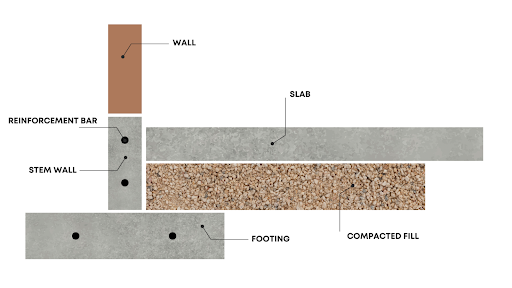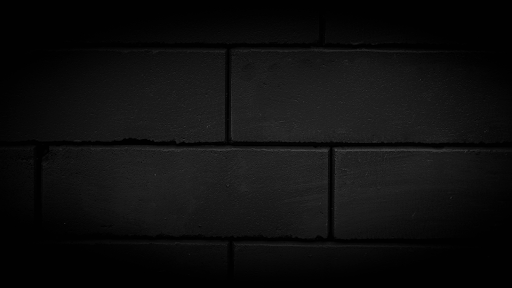Stem walls are a vital structural element in many homes, providing support and stability to the foundation. Understanding stem walls and their importance is crucial for homeowners in Long Island, Brooklyn, Queens & Bronx, where soil conditions and weather patterns can impact their integrity.
What is a Stem Wall?
A stem wall is a vertical concrete wall that extends above the ground level and connects the stem wall foundation footing to the exterior walls of a building. It serves as a support structure, distributing the weight of the building evenly across the foundation.
The Importance of Stem Walls
- Structural Support: Stem walls provide essential support to the stem wall foundation, preventing it from shifting or settling.
- Waterproofing: Proper construction of stem walls with waterproofing materials helps to protect the foundation from moisture damage and mold.
- Pest Prevention: Well-constructed stem walls can deter insects and rodents from entering the basement.
- Energy Efficiency: Stem walls can contribute to improved energy efficiency by reducing heat loss and air infiltration.
How Is a Stem Wall Created?
A stem wall is typically constructed by excavating a trench around the building, pouring a concrete footing, setting up forms, placing rebar, and pouring concrete into the forms. After the concrete cures, the forms are removed, and the area is backfilled. The height of the stem wall depends on the desired floor level and local soil conditions, and waterproofing is essential to prevent moisture damage. Proper drainage and inspection are also crucial for ensuring the stem wall’s long-term durability.
Common Stem Wall Issues
Over time, stem walls can be affected by various factors, including:
- Water Damage: Moisture can cause erosion and deterioration of the concrete.
- Soil Movement: Shifting soil can exert pressure on the stem wall, leading to cracks or structural instability.
- Age and Wear: Stem walls, like any other structure, can deteriorate with age.
Identifying Stem Wall Problems
If you suspect issues with your foundation stem wall look for the following signs:
- Cracks or Bowing: Visible cracks or bowing in the foundation walls or basement walls.
- Water Intrusion: Dampness, mold, or musty odors in the basement.
- Uneven Floors: Shifting or tilting floors.
- Foundation Settlement: Noticeable sinking or unevenness around the exterior of the building indicates problems with footing and stem wall foundation
Are Stem Walls Recommended in Areas Like Long Island, Brooklyn, Queens & Bronx?
Yes, stem walls are recommended in areas like Brooklyn, Queens, and Long Island.These regions are prone to flooding and have varying soil conditions that can make them susceptible to foundation issues . A stem wall foundation provides additional support and protection against moisture damage, making it a wise choice for many homeowners in these areas.
However, it’s crucial to consult with a structural engineer to determine the most suitable foundation type for your specific property. They can assess the soil conditions, and local building codes, and your individual needs to provide expert recommendations.
Comparison Between a Stem Wall and a Monolithic Slab
There is a common confusion between a stem wall and a monolithic slab. It is important to know the difference so that homeowners can make an informed decision about their homes.
| Feature | Stem Wall | Monolithic Slab |
|---|---|---|
| Construction | Separate footing and wall | Single, continuous pour |
| Advantages | Better support, crawl space | Faster, cheaper, level surface |
| Disadvantages | More expensive, time-consuming | Less flexible, potential flooding issues |
| Best suited for | Unstable soil, flooding | Stable soil, lower floor level |
Get A Free Estimate

Get A Free Estimate
Maintaining a Stem Wall Foundation
To ensure the longevity and structural integrity of your stem wall slab, follow these maintenance tips.
- Regular Inspections: Conduct visual inspections at least twice a year, checking for cracks, water damage, or signs of erosion.
- Landscaping Care: Maintain proper drainage around your foundation to prevent water from pooling against the stem wall.
- Pest Control: Regularly inspect for signs of termites or other pests that could damage the wood or concrete.
- Waterproofing: If your stem wall is not already waterproofed, consider applying a waterproofing sealant to prevent moisture penetration.
- Foundation Repair: Address any cracks or damage promptly to prevent further deterioration.
By following these maintenance practices, you can help protect your stem wall foundation and ensure the long-term stability of your home.
Zavza Seal: Your Stem Wall Repair Experts
If you suspect issues with your stem wall, don’t hesitate to contact Zavza Seal . Our experienced team can diagnose the problem and provide effective solutions. We specialize in:
- Stem Wall Repair: Addressing cracks, water damage, and structural instability.
- Foundation Waterproofing: Protecting your stem wall and foundation from moisture intrusion.
- Soil Stabilization: Improving the stability of the soil surrounding your stem wall.
- Structural Reinforcement: Strengthening the stem wall and foundation to ensure long-term durability.
By choosing Zavza Seal, you can trust that your concrete stem wall will be repaired expertly, protecting your home’s structural integrity and preventing costly damage.
Contact us today for a free inspection and consultation at (631) 980-1800
Related Blog Posts:
- Effective Rainwater Management Techniques for Protecting Your Foundation
- Buying a House with Foundation Problems and the Seller Won’t Pay?
- The Importance of Professional Foundation Repair and Waterproofing
- Do All Cracks Mean Foundation Problems?
- Don’t Ignore the Warning Signs: Cracked Foundation Repair
Get A Free Estimate

